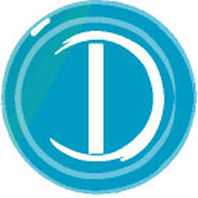Mining Product: DOSES - Determination of Sound Exposures
Original creation date: May 2009
The Determination of Sound Exposures (DOSES) software was developed for use by mine management and safety personnel to simplify the record-keeping and analysis associated with time-motion studies and worker noise exposures, making it easier to identify and solve noise problems.
The software relies on a time-motion study that profiles the worker's daily activities. At the same time, noise measurements are collected with a dosimeter or sound level meter (SLM). Observations about the worker's location and tasks or other activities are recorded along with times and durations so they can later be matched up with the noise data.
After the completion of a time-motion study of the worker's daily tasks and locations (possible noise sources), which measures the worker's noise exposures during the recorded events, the information is entered into DOSES. The program then displays information about the worker's accumulated noise dose over time.
Updates made for Version 1.1.0:
- A fix to the File/Open dialog to eliminate a file selection bug present when running under Windows 7.
- The new version will install over or remove DOSES 1.0
- The default installation directory has been changed to [Program Files]\NIOSH\DOSES
- A fix to the print graph bug present under Windows 7.
To install, download the ZIP archive, unpack into a temporary folder and run DOSES Setup.exe. The archive also contains the publication Determination of Sound Exposures (DOSES): Software Manual and Implementation Guide.
Authors: GP Cole, ER Spencer, ER Bauer
Audience: Mine management and safety personnel
Software (Windows) - February 2012
Version: 1.1
NIOSHTIC2 Number: 20035468
Pittsburgh, PA: U.S. Department of Health and Human Services, Public Health Service, Centers for Disease Control and Prevention, National Institute for Occupational Safety and Health, 2012 Feb
See Also
- Analysis of Nonstandard Noise Dosimeter Microphone Positions
- Assessment of Equipment Operator’s Noise Exposure in Western Underground Gold and Silver Mines
- Determination of Sound Exposures (DOSES): Software Manual and Implementation Guide
- Development of the NIOSH Determination of Sound Exposures (DOSES) Mining Noise Exposure Management Software
- Drill Rig Incident
- Hearing Loss Prevention Overview
- Noise and Hearing Protection: Development of Two Training Exercises for Drillers
- Noise Exposure and Overhead Power Line (OPL) Safety Hazards at Surface Drilling Sites
- Technology News 536 - NIOSH Develops New Software to Analyze and Reduce Noise Exposure
- Technology News 538: Acoustic Enclosure to Reduce Noise From Vibrating Screen Mechanism Housings
- What Does a Hearing Loss Sound Like?
- Page last reviewed: 10/22/2016
- Page last updated: 9/20/2012
- Content source: National Institute for Occupational Safety and Health, Mining Program


 ShareCompartir
ShareCompartir
